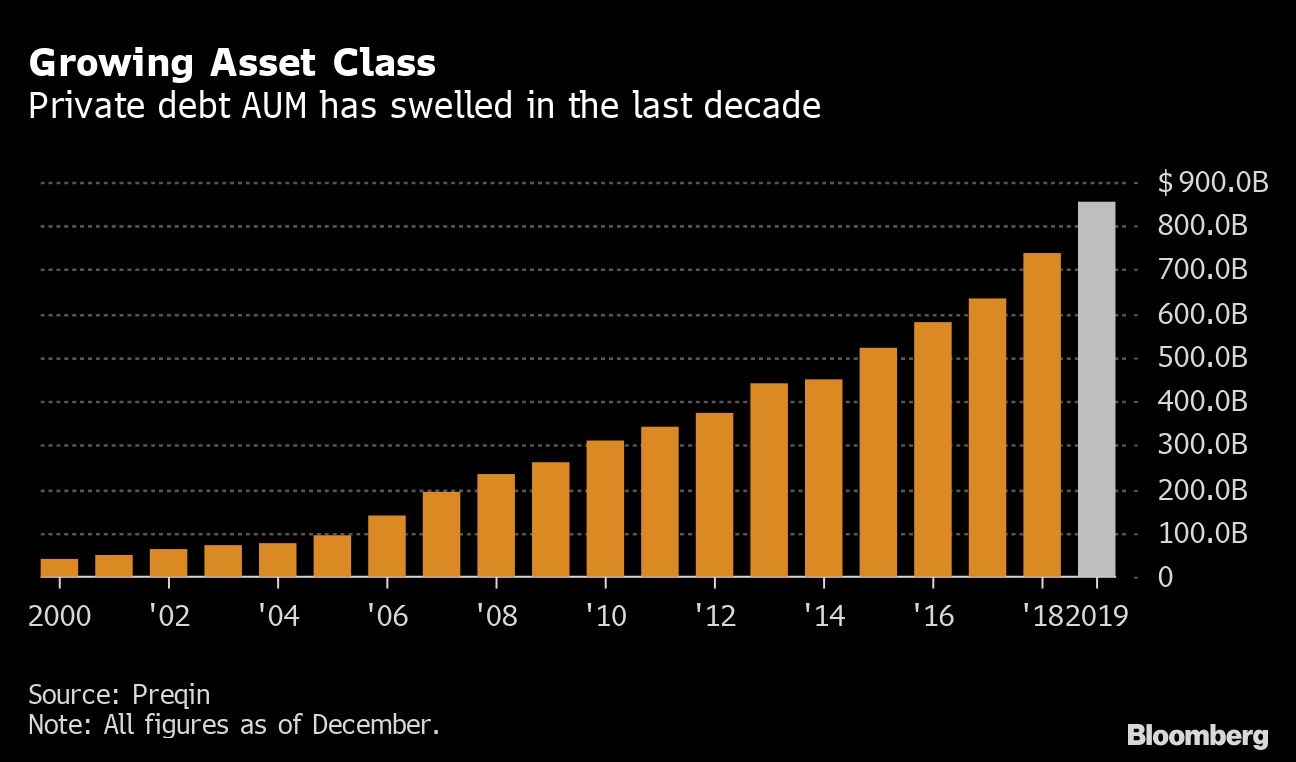Jul 28, 2020
Billion dollar deals see private credit step out of the shadows
, Bloomberg News

In the world of private lending, the loans always skewed small. The typical borrower would be some mid-tier company that lacked access to bond and syndicated loan markets, and the typical deal size would be around US$100 million. If a loan climbed to US$500 million, it’d be celebrated as a mega-deal.
But in a sign of how the pandemic is rapidly changing the shadow lending market, super-charging its emergence this past decade as a major source of credit for corporate America and putting it in direct competition with Wall Street, both the size of the borrowers and the size of the deals are swelling. In a transaction last week that epitomized this shift, Bombardier Inc., the Canadian plane and train maker, said it scored a loan that can be as much as US$1 billion, the new benchmark for mega-deals in the market.
For borrowers like Bombardier, the shadow lending market is providing quick access to the financing they need -- albeit at heftier interest rates -- to survive the economic downturn just as Wall Street firms are becoming increasingly leery of risking capital on such loans. For the shadow, or direct, lenders -- an assortment of private-equity firms and other asset managers that aren’t subject to the same regulatory scrutiny as big banks -- it’s a chance to take on those banks in a market they long dominated and to boost their share of the overall loan business in the process.
When central bankers slashed benchmark interest rates to around zero across the globe as the pandemic hit, they only further accelerated this trend, as investors desperate for yield began paying even more attention to private markets. Apollo Global Management set up a new lending business this month focusing on loans of around US$1 billion, joining a list of asset managers, including Ares Management and Blackstone Group Inc.’s GSO Capital Partners, that are now making -- and often holding onto -- these new mega-loans.
“Direct lenders have raised significant amounts of capital and there’s just more money to spend,” said Justin Breen, a lawyer in Proskauer Rose’s private credit group. “The perceived threshold for what is a direct lending versus a syndicated deal keeps going up and up.”

These lenders can provide sure capital at a time when conventional deals might be harder. When raising money was still treacherous for some borrowers in the first half of the year, the Ardonagh Group, a European insurance brokerage, was able to negotiate a 1.875 billion-pound (US$2.4 billion) debt package from a small group of private lenders.
Lenders estimate that over the next five years, some 10 per cent of new U.S. leveraged corporate loans could end up happening in the private market, a major shift from a year or two ago when large private deals were rare. That could amount to US$250 billion to US$300 billion of loans, cutting into growth in a business that can directly provide or otherwise feed a third of a Wall Street firm’s investment banking fees.
Private financing can cost 1.25 percentage points more in annual interest than a more public leveraged loan made by banks and sold to dozens of money managers, a market that is more than US$1.3 trillion in size globally. But to some borrowers, paying higher interest is better than trying for a syndicated loan, a process that can take weeks and may be quashed by another virus flare-up. Getting loans privately can also entail sharing financials with fewer parties, a positive for companies looking to avoid publicizing too much information.
“Bigger deals are more common as there are larger pools of capital being raised, and issuers are more open to the proposition of one large entity being their lender as opposed to multiple,” said Tom Connolly, global co-head of the Goldman Sachs Merchant Banking Division’s credit investing platform.
Goldman Sachs’ unit was relatively early to the market, raising its first large loan fund in 2008. Other firms making large loans now include Golub Capital, HPS Investment Partners and KKR & Co.’s private lending unit.
There are risks associated with direct lending. Some money managers are betting relatively high portions of their portfolios on companies that may struggle to navigate slowing economies globally, while most credit-focused funds try to keep the risk of losses low by making many smaller investments. The large lenders say they are vetting deals carefully.
“We can use our size to make attractive investments in these larger companies that we think are going to be resilient, even in the face of COVID-19 or a soft economy, higher unemployment or other risk factors,” said Blair Jacobson, co-head of European credit at Ares.
The loans are also set up in a way that protect lenders, said John Zito, deputy chief investment officer of credit at Apollo Global Management. Private lenders are usually first in line to get repaid if a company fails, and their loans are often less than half the value of the company, he said.
“Large cap direct lending is a really interesting, safe way to really move the needle in terms of allocations,” Zito said.
The growth of private lenders is part of the broader expansion of shadow banking globally, which poses a problem for regulators trying to track risk in the financial system.
For many companies, being able to borrow quickly for an acquisition or to refinance maturing debt is more critical now. Private markets advisory firm the StepStone Group, which has US$21 billion of client cash in private debt and a database of 17,000 private debt transactions, has been tracking this shift, which has included Bombardier’s jumbo transaction last week and newspaper company Gannett Co. within the past year.
“The trend was already there, COVID-19 just accelerated it,” said Marcel Schindler, a partner at StepStone. “There is a change, the privatization of part of the market.”








